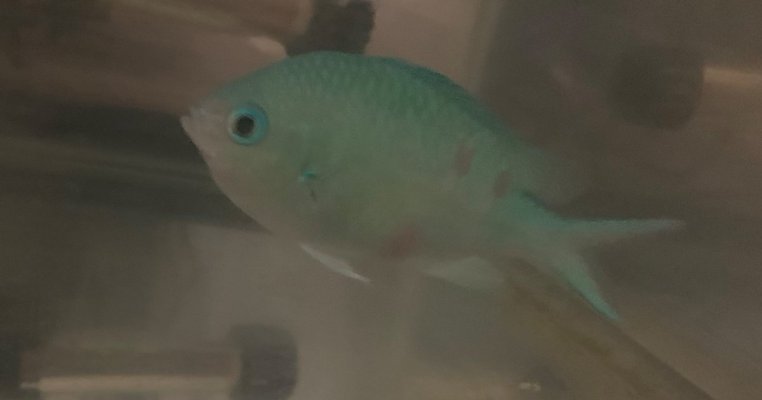Hey everyone!
I am looking to get some recommendations from everyone on what course of action I should take with my tank. This tank is about 4 month old and appears to have some sort of disease that is killing my fish that I couldn't identify. Admittedly I did not QT the fish for this tank and will forever change those practices in the future.
All fish were eating well and acting normal until one day I woke up to my orchard dottyback dead. I couldn't see any signs of harassment from other fish or any indication of disease on the fish. I removed the fish and then continued on thinking it might just be that the fish expired. Later that same day I come back to my tank and find my orange-spotted blenny dead. Now worrying more, I sit and observe my fish for some time and notice that my yellow tang has a white film like coating starting on its side. Unsure what it is I just jump straight to QT for all fish remaining in tank. The remaining fish would be 2 clowns, 6 Pajama cardinals, 3 black axil chromis, 1 Fiji blue devil damselfish, and 1 yellow tang.
As of May 14th I started copper treatment with coppersafe as that was all I had at the time. The next day both clownfish and 3 pajama cardinals were dead. Since then all remain fish seem normal. I then increased DT temp to 81 degrees to begin a fallow period of at least 45 days starting May 17th. My copper power finally got here so I did transition to it and began the counter on May 18th for a 30 day treatment in copper for the remaining fish. The last couple of days one of the chromis began to display reddish blotches on its side that with further research looks consistent with uronema. This fish did have a tiny spot of this when I got it but at that time I did not know about uronema and thought that it may have just been a mark from other fish harassing him as the store had them in with a few aggressive fish. The initial spot vanished after a couple days of being in my DT and has not had any markings for over a month.
Now knowing that uronema is most likely present, how should I handle the fish currently in QT that are being treated with copper? Also, how should I handle my DT as the fallow period will be irrelevant for uronema?
Thank you for all your help.
I am looking to get some recommendations from everyone on what course of action I should take with my tank. This tank is about 4 month old and appears to have some sort of disease that is killing my fish that I couldn't identify. Admittedly I did not QT the fish for this tank and will forever change those practices in the future.
All fish were eating well and acting normal until one day I woke up to my orchard dottyback dead. I couldn't see any signs of harassment from other fish or any indication of disease on the fish. I removed the fish and then continued on thinking it might just be that the fish expired. Later that same day I come back to my tank and find my orange-spotted blenny dead. Now worrying more, I sit and observe my fish for some time and notice that my yellow tang has a white film like coating starting on its side. Unsure what it is I just jump straight to QT for all fish remaining in tank. The remaining fish would be 2 clowns, 6 Pajama cardinals, 3 black axil chromis, 1 Fiji blue devil damselfish, and 1 yellow tang.
As of May 14th I started copper treatment with coppersafe as that was all I had at the time. The next day both clownfish and 3 pajama cardinals were dead. Since then all remain fish seem normal. I then increased DT temp to 81 degrees to begin a fallow period of at least 45 days starting May 17th. My copper power finally got here so I did transition to it and began the counter on May 18th for a 30 day treatment in copper for the remaining fish. The last couple of days one of the chromis began to display reddish blotches on its side that with further research looks consistent with uronema. This fish did have a tiny spot of this when I got it but at that time I did not know about uronema and thought that it may have just been a mark from other fish harassing him as the store had them in with a few aggressive fish. The initial spot vanished after a couple days of being in my DT and has not had any markings for over a month.
Now knowing that uronema is most likely present, how should I handle the fish currently in QT that are being treated with copper? Also, how should I handle my DT as the fallow period will be irrelevant for uronema?
Thank you for all your help.




















